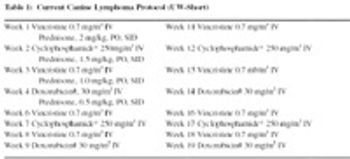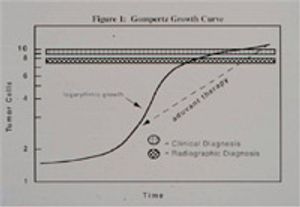
Lymphoma can be classified according to World Health Organization clinical stage, anatomic site, histologic/cytologic phenotype, and immunophenotype.

Lymphoma can be classified according to World Health Organization clinical stage, anatomic site, histologic/cytologic phenotype, and immunophenotype.

Most cytotoxic chemotherapy protocols in common veterinary use are designed to have a low risk of adverse effects.

Of all the treatment modalities available in veterinary clinical oncology, surgery remains the most commonly applied and the most likely to effect cure at present.

Critically important, life-or death decisions regarding euthanasia, treatment, choice to pursue referral, etc. may be made based on information that the owner gets form the primary practicing clinician.

The majority of neoplastic disorders presenting to the practitioner are manageable in the practice setting and advances in cancer chemotherapeutics are realized virtually every year.

Tumors of the skin and subcutaneous tissue are the most common tumors affecting dogs, accounting for approximately one-third of all tumors encountered in the species.

Published: April 1st 2009 | Updated:

Published: April 1st 2009 | Updated:

Published: April 1st 2009 | Updated:

Published: April 1st 2009 | Updated:

Published: April 1st 2009 | Updated:

Published: April 1st 2009 | Updated: